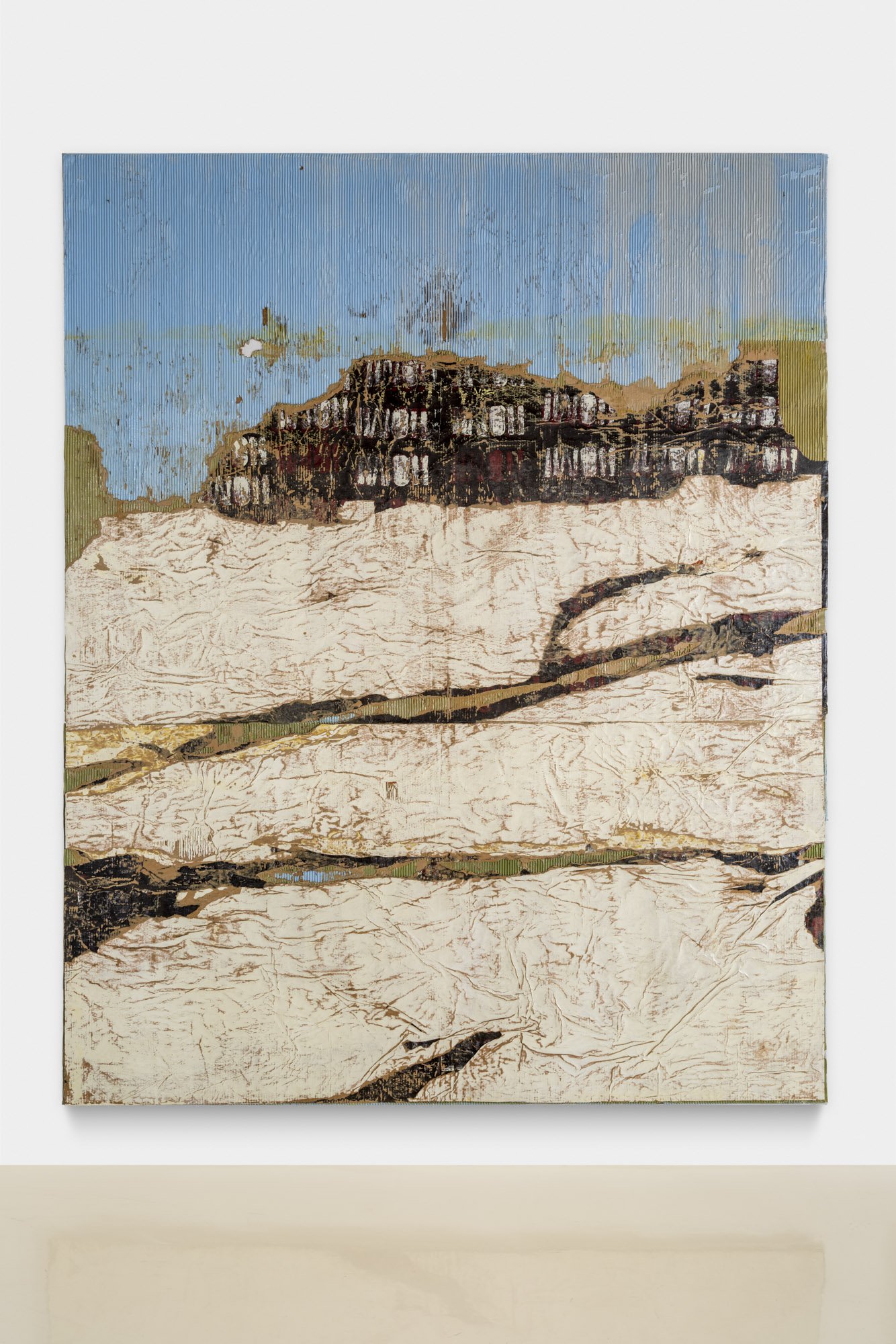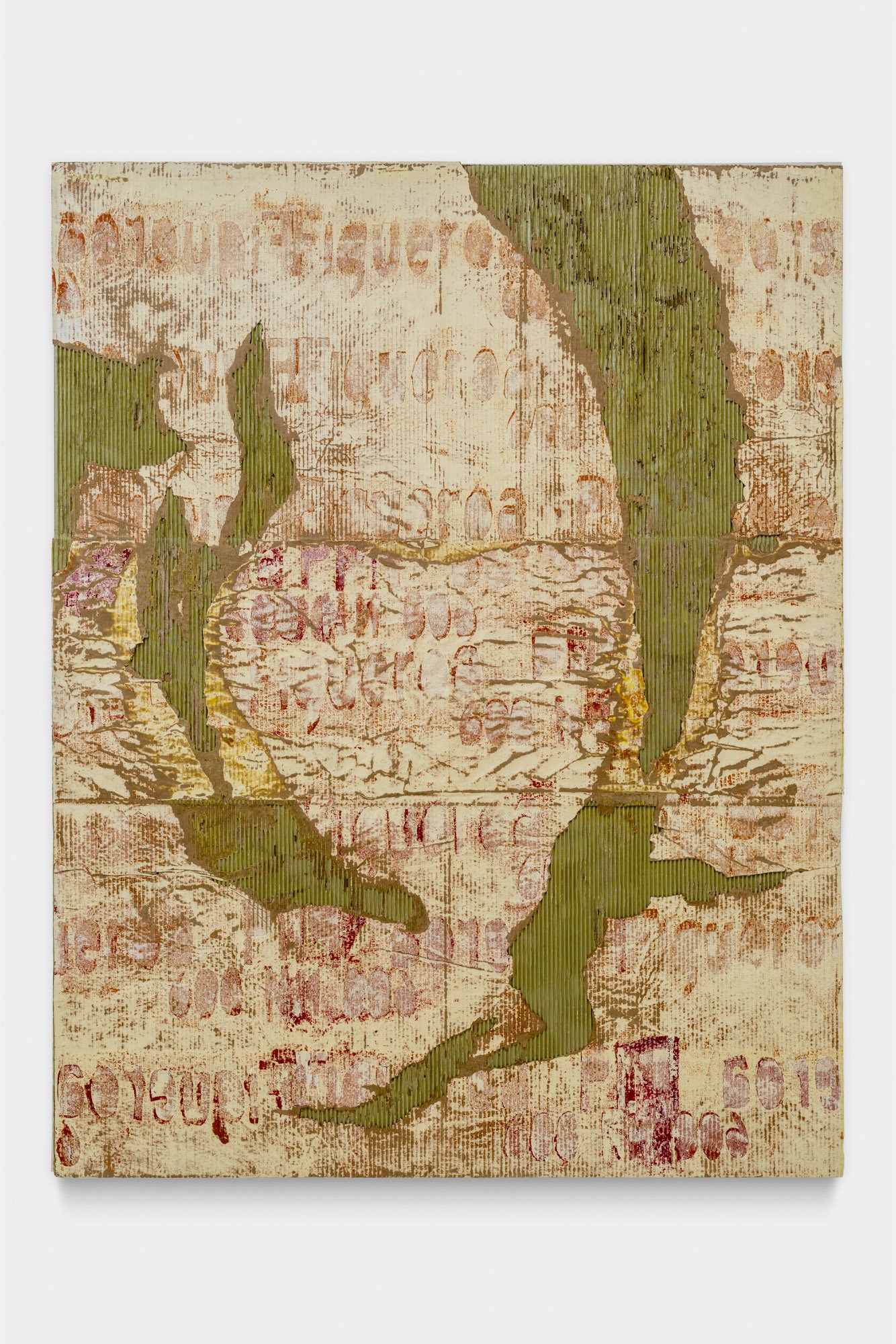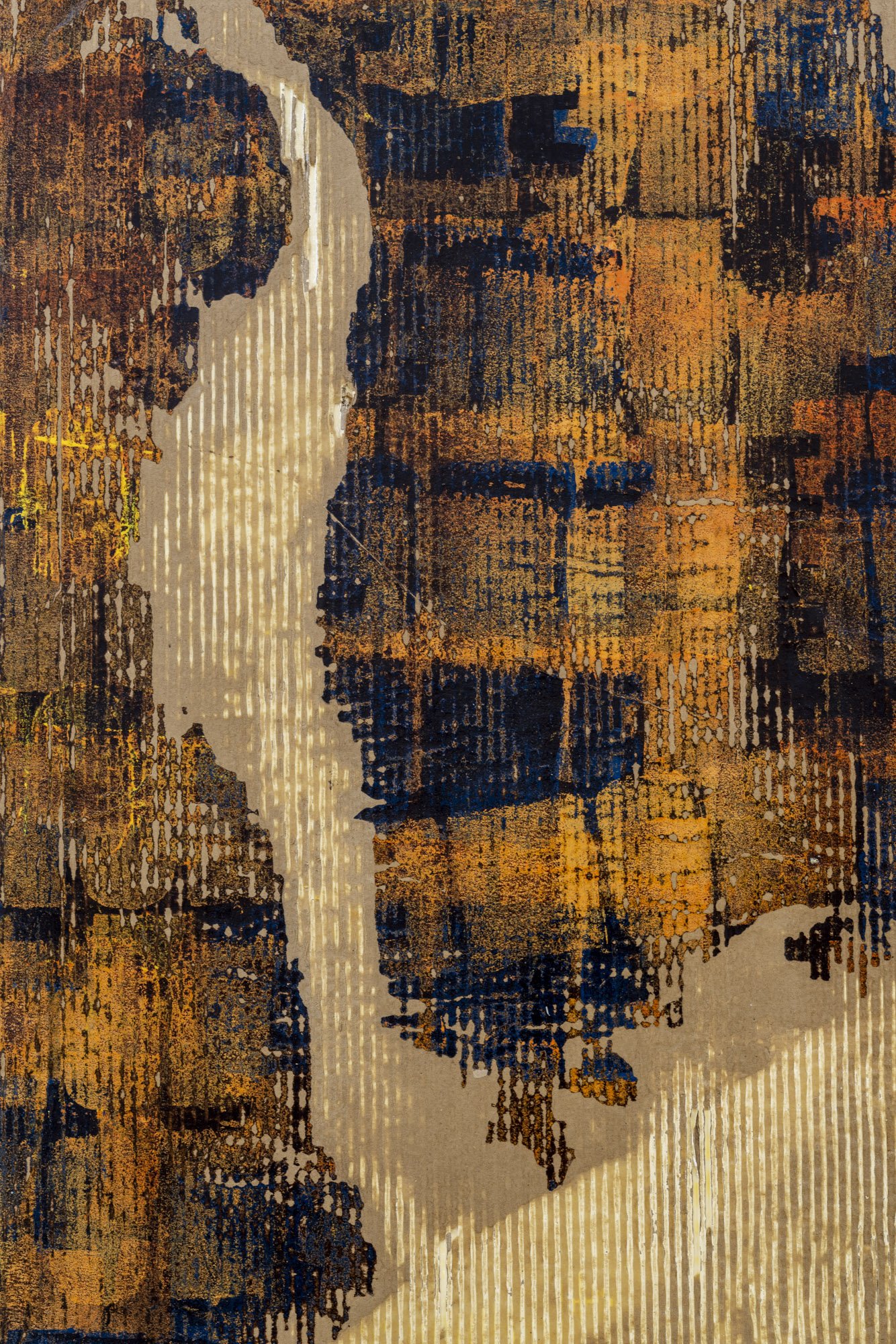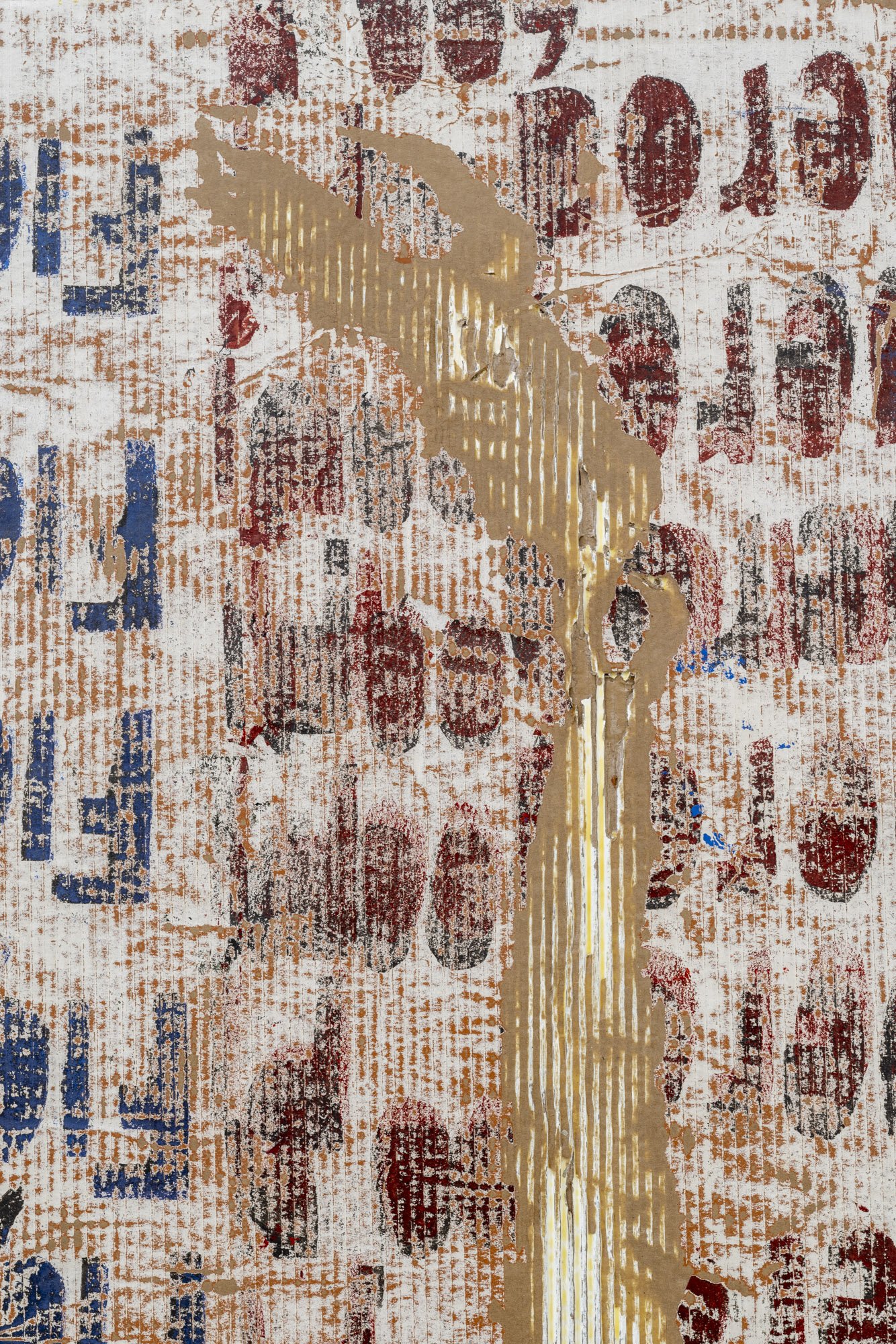Edgar Ramirez
Smoky Hollow
09/09/23 - 10/07/23
Chris Sharp Gallery is pleased to present Edgar Ramirez’s second solo exhibition at the gallery.
This exhibition sees the artist continuing his examination of LA’s South Bay while expanding and refining the formal characteristics of his work, as well as his art historical frame of reference. Of this new body of work, Ramirez writes:
Smoky Hollow is a zone located in El Segundo, California. Tucked between a residential neighborhood and the Chevron oil refinery, this area consists of businesses, bars, restaurants, and shops. When it was first developed after World War II, Smoky Hollow was dedicated to manufacturing and industrial plants. Over time, however, demand for manufacturing in the area decreased, many of the buildings became desolate, and the physical conditions of the district declined. Today, it’s a lucrative and robust space for creative businesses, essentially revitalizing the city, building upon its distinct industrial architecture. It's an area I pass through on my commute from the South Bay to my studio in Inglewood and because much of the space is taken up by the oil refinery, I can’t help but to relate it to the nearby refineries of my hometown, Wilmington.
Following the closing of my show, I’ve Been Dreamin’ Too Long (2022), an interest in my predatory loan paintings (PLP’s) shifted to an interest in the abstract and formal structure of a painting. This shifting interest brought forth the body of work I showed at Frieze Los Angeles (2023); paintings which embodied both the text used in the predatory loan signs and the formal, aesthetic qualities of the nearby LA and Long Beach Ports. Further expanding upon this idea, these new paintings consider forms and colors not only from the vast array of cargo containers, but also from the other major industry in the area: energy, namely the oil refineries. Rather than using the familiar full semiotics of “Fast Cash Home Loans” and “We Buy Homes”, I wanted to concentrate on recurring words, particularly the word “Home”. Because of this, it was a natural shift to focus on the refineries and their look; the colors, the smoke stacks, their location, and the surrounding community.
The stark differences between the El Segundo and Wilmington neighborhoods have always been apparent, requiring an emphasis on both spaces for this new body of work. One city, El Segundo, encourages growth through the guiding principles of infrastructure development, maintaining an attractive image, and promoting vibrant businesses, while also addressing the needs of the community. The other, Wilmington, suffers from issues of homelessness, housing, public safety and land use. To be clear, these connections and their consequences are still in their infancy for me and are drawn predominantly from observation.
The first group of paintings I made for this show are the larger “Smoke/Stack” paintings which essentially combine the scale of a shipping container door and use text found in the refineries, while also using the word “Home” from my PLP’s. The colors are derived directly from the landscape: light blue, deep brown, rusted orange and red, and creamy white. Tears on the surface are reflective of the action of the smoke stacks observed at the refineries. In contrast, the series of smaller “Smoke Paintings” draw upon hand-drawn sketches I make of the refinery smokestacks. The approach to both the large and small paintings contains a repetitive quality influenced by my years in production and manufacturing, which consisted of a mechanical and recursive procedure; a uniformity that obliged the operator to perform like a machine. My process is characterized by a prescribed system of repetition and multiplicity: splitting the cardboard sheets, painting the sheets, stacking the sheets, and ripping the sheets through means of décollage, yet no two works are alike.
These 14 Smoke Paintings are the beginning of a larger grouping inspired by a series of Warhol paintings. Sparked by my interest in Andy Warhol’s Shadow paintings (1978-79) located at DIA Beacon, my approach to this body of work combines procedural elements of print production borrowed from printmaking techniques and manufacturing methods. The Smoke Paintings are aligned adjacent to one another, drawing not only upon Warhol’s Shadows, but also likening them to trains coming in and out of the port/refineries. The Franco-Hungarian postwar abstract painter Simon Hantaï is also a big influence on this body of work, primarily through his use of negative space, or absence of paint. The smallest group of new works, both in number and in scale, called the “Remnant Paintings” are comprised of scraps from the Smoke Paintings. Discarded pieces, yes, but in my world, there’s always a use for scraps and remnants. Absence shall lead the way.
Edgar Ramirez
(b. 1989, Los Angeles)
Edgar lives and works in Los Angeles. He received his MFA from ArtCenter College of Design, Pasadena, in 2020, and his BFA, Otis College of Art and Design, Los Angeles in 2018. He had his first solo exhibition at Chris Sharp Gallery (2022), and his work has been featured two-person and group exhibitions, most recently at Lisson Gallery, New York (2023); François Ghebaly, LA; Long Beach Museum of Art; The Mistake Room, Los Angeles (2022), Show Gallery, as part of his residency at Quinn Emanuel Artists-in-Residence, Los Angeles (2022), as well as a solo presentation at NADA, Miami with Chris Sharp Gallery (2021) and Frieze Los Angeles with Chris Sharp Gallery (2023).
Smoke No. 9, 2023. House paint on cardboard, mounted on canvas, 76 x 59 in (193.04 x 149.86 cm)
Smoke No. 9, 2023. (Detail)
Smoke No. 9, 2023. (Detail)
Smoke No. 10, 2023. House paint on cardboard, mounted on canvas, 76 x 59 in (193.04 x 149.86 cm).
Smoke No. 10, 2023. (Detail)
Smoke No. 10, 2023. (Detail)
Smoke No. 6, 2023. House paint on cardboard, mounted on canvas, 76 x 59 in (193.04 x 149.86 cm).
Smoke No. 6, 2023. (Detail)
Smoke No. 6, 2023. (Detail)
Smoke No. 7, 2023. House paint on cardboard, mounted on canvas, 76 x 59 in (193.04 x 149.86 cm).
Smoke No. 7, 2023. (Detail)
Smoke No. 7, 2023. (Detail)
Smoke No. 14, 2023. House paint on cardboard, mounted on canvas, 76 x 59 in (193.04 x 149.86 cm).
Smoke No. 14, 2023. (Detail)
Smoke No. 14, 2023. (Detail)
Smoke No. 8, 2023. House paint on cardboard, mounted on canvas, 76 x 59 in (193.04 x 149.86 cm).
Smoke No. 8, 2023. (Detail)
Smoke No. 8, 2023. (Detail)
Smoke No. 11, 2023. House paint on cardboard, mounted on canvas, 76 x 59 in (193.04 x 149.86 cm).
Smoke No. 11, 2023. (Detail)
Smoke No. 11, 2023. (Detail)
Smoke No. 13, 2023. House paint on cardboard, mounted on canvas, 76 x 59 in (193.04 x 149.86 cm).
Smoke No. 13, 2023. (Detail)
Smoke No. 13, 2023. (Detail)
Smoke No. 12, 2023. House paint on cardboard, mounted on canvas, 76 x 59 in (193.04 x 149.86 cm).
Smoke No. 12, 2023. (Detail)
Smoke No. 12, 2023. (Detail)
Bayonne (Smoke/Stack), 2023. House paint on cardboard, mounted on canvas, 120 x 96 cm (304.8 x 243.84 cm).
Bayonne (Smoke/Stack), 2023. (Detail)
Bayonne (Smoke/Stack), 2023. (Detail)
Dalerose (Smoke/Stack), 2023. House paint on cardboard, mounted on canvas, 120 x 96 cm (304.8 x 243.84 cm).
Dalerose (Smoke/Stack), 2023. (Detail)
Dalerose (Smoke/Stack), 2023. (Detail)
Gaffey (Smoke/Stack), 2023. House paint on cardboard, mounted on canvas, 120 x 96 cm (304.8 x 243.84 cm).
Gaffey (Smoke/Stack), 2023. (Detail)
Gaffey (Smoke/Stack), 2023. (Detail)
(Smoke) Remnant No. 12, 2023. House paint on cardboard, mounted on canvas, 48 x 37 in (121.92 x 93.98 cm).
(Smoke) Remnant No. 12, 2023. (Detail)
(Smoke) Remnant No. 6, 2023. House paint on cardboard, mounted on canvas, 48 x 37 in (121.92 x 93.98 cm).
(Smoke) Remnant No. 6, 2023. (Detail)
(Smoke) Remnant No. 9, 2023. House paint on cardboard, mounted on canvas, 48 x 37 in (121.92 x 93.98 cm).
(Smoke) Remnant No. 9, 2023. (Detail)
(Smoke) Remnant No. 4, 2023. House paint on cardboard, mounted on canvas, 48 x 37 in (121.92 x 93.98 cm).
(Smoke) Remnant No. 4, 2023. (Detail)
(Smoke) Remnant No. 7, 2023. House paint on cardboard, mounted on canvas, 48 x 37 in (121.92 x 93.98 cm).
(Smoke) Remnant No. 7, 2023. (Detail)
(Smoke) Remnant No. 14, 2023. House paint on cardboard, mounted on canvas, 48 x 37 in (121.92 x 93.98 cm).
(Smoke) Remnant No. 14, 2023. (Detail)



































































